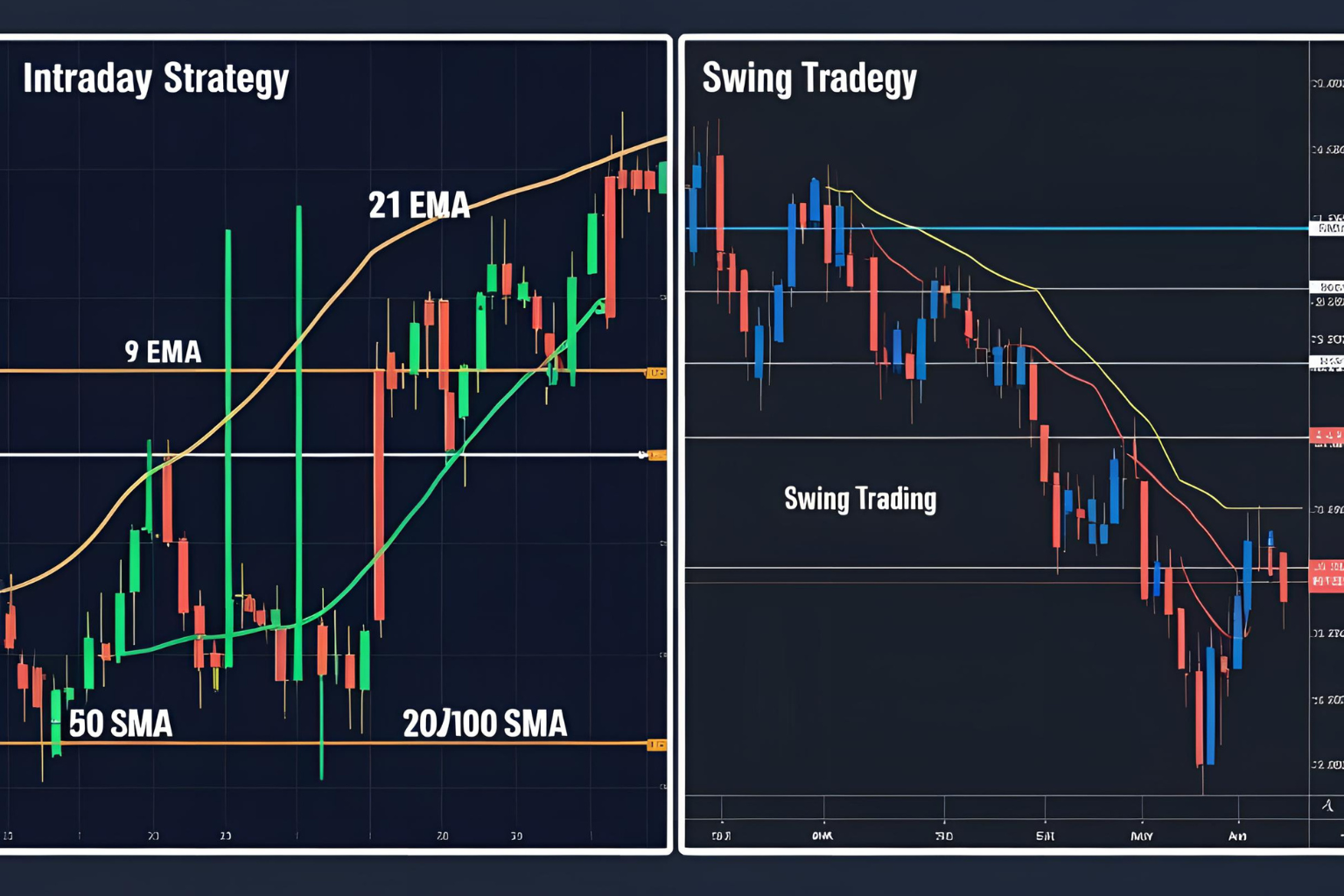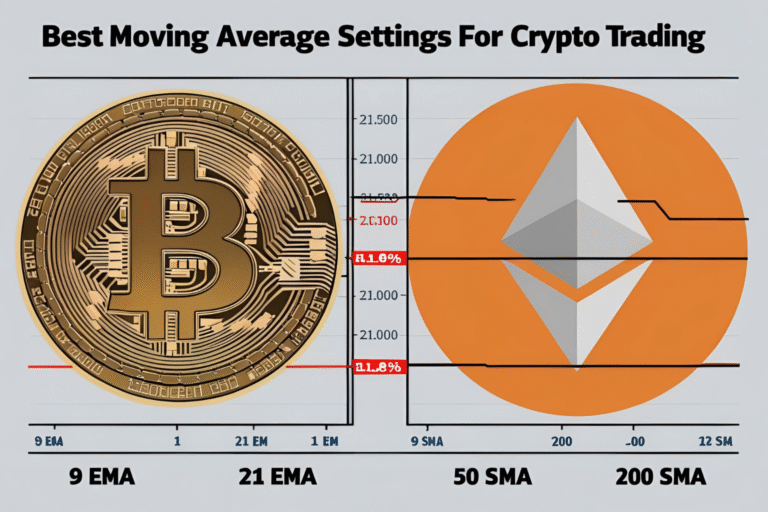Best Moving Average Periods for Forex Trading (Intraday & Swing)
Introduction
Choosing the right moving average period is one of the most important decisions in technical analysis—especially in the forex market, where price movements are fast and driven by global macro events.
In this guide, you’ll learn the best moving average periods for forex trading, based on popular strategies used by professional traders for intraday, swing, and trend-following setups.
Why Period Selection Matters in Forex
Moving averages are calculated based on a specific number of past price candles—known as the period. The number you choose determines:
- Responsiveness: Shorter periods react faster
- Stability: Longer periods are smoother and less sensitive
- Relevance: Aligns with your trading timeframe and goals
For example:
- A 9 EMA works well on a 5-minute chart
- A 50 or 200 SMA is better for trend confirmation on a daily chart
Best MA Periods by Trading Style
1. Scalping / Intraday Trading
- 9 EMA, 20 EMA
- Timeframe: 5-min to 15-min charts
- Use for fast entries and exits in high-volatility sessions
2. Day Trading
- 9 EMA, 21 EMA, 50 EMA
- Timeframe: 15-min to 1-hour charts
- Track short-term trend shifts and breakout pullbacks
3. Swing Trading
- 20 EMA, 50 SMA, 100 EMA
- Timeframe: 1-hour, 4-hour, or daily charts
- Identify sustained directional trends and pullbacks
4. Trend Following / Position Trading
- 100 SMA, 200 SMA
- Timeframe: Daily and Weekly charts
- Best for confirming the overall macro trend
Strategy Tip: Combine Short and Long MAs
- Use a short MA (e.g., 9 EMA) for entry timing
- Use a long MA (e.g., 50 or 200 SMA) for trend filtering
- Crossovers or pullbacks between the two provide actionable trade setups
Example: On EUR/USD 1-hour chart
- Enter long when price is above 200 SMA
- Use pullbacks to 20 EMA or 50 EMA for entries
- Exit when 9 EMA crosses below 20 EMA
MA Periods Commonly Used by Forex Traders
| Purpose | MA Periods |
|---|---|
| Fast entry signals | 9 EMA, 13 EMA |
| Confirming short-term trend | 20 EMA, 21 EMA |
| Swing trade setups | 50 SMA, 100 EMA |
| Long-term trend filter | 200 SMA |
Tips for Picking the Right Period
- Align with your timeframe: Use shorter MAs on lower timeframes and longer MAs on higher timeframes
- Test combinations: Backtest different period combos on the same pair
- Watch for consistency: Stick to one set of periods once you’ve validated them
- Adapt to volatility: In choppy conditions, longer MAs may give cleaner signals
Summary
There’s no universal best period—but the right moving average period for forex trading depends on your trading style and chart timeframe.
- Shorter MAs like 9 and 20 EMA are best for quick signals
- 50 and 200 SMA are great for trend-following and long-term context
Experiment with these periods, stay consistent, and build a strategy that fits your risk profile and market conditions.
FAQs
Which moving average period is best for EUR/USD?
9 EMA and 21 EMA for short-term; 50 SMA and 200 SMA for longer-term analysis.
Do I need to adjust periods for different currency pairs?
Usually not, but volatile pairs may require shorter or longer MAs depending on your goals.
Is SMA or EMA better for forex?
EMA is better for fast-moving price action; SMA is more stable for longer-term signals.
Can I use just one moving average?
Yes, but combining two or more improves trend confirmation and signal accuracy.
Are these periods valid for all sessions?
Yes, but strategies work best during London and New York trading hours.

